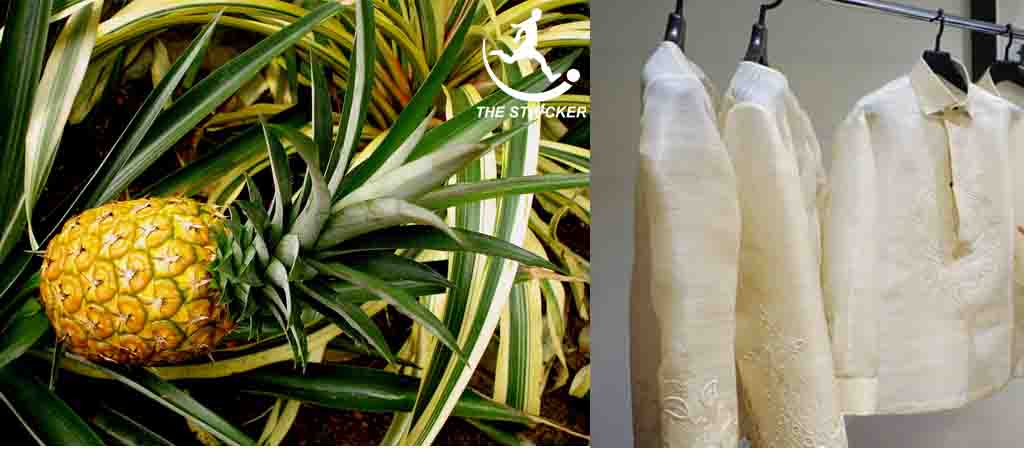
Pineapple is a fruit that is known to all. We think that only fruit is useful and other parts of the fruit are garbage. What we think is wrong. We can produce fiber from pineapple leaf which is known as Pineapple fiber or pina fiber and is natural fiber also.
Is Pina Fiber a Bast Fiber ?
Fibers that are obtained from the stem, bark, or leaf of certain vegetable plants are called bast fiber. As Pina Fiber is collected from the leaves of the pineapple plant; so, pina is also a bast fiber.
This fiber is commonly used in the Philippines. Sometimes this fiber is combined with silk and polyester to create textile fiber for more luster; strength, or fineness. This fiber is biodegradable so that the expectation of greening the today’s world has come into use.
You May Read: Cotton The King of All Fiber
History of Pineapple Fiber
This fiber is commonly used in the Philippines. Sometimes this fiber is combined with silk and polyester to create textile fiber for more luster; strength, or fineness. This fiber is biodegradable so that the expectation of greening the today’s world has come into use.
Physical properties of Pina:
| PARAMETERS | PROPERTIES |
| Length | 3-9mm |
| Breadth | 4-8 mm |
| L/B ratio | 450 |
| Gravimetric Fineness | 1.54(tex) |
| Tenacity | 50(gm/tex) |
| Extension of break | 2-6% |
| Flexural rigidity | 3.8 (dyne cm-2) |
| Density | 1.48(gm/cc) |
| Moisture regain | 65% |
| Color | Ivory-white color |
Chemical properties:
| COMPOSITION | PERCENTAGE |
| Holocellulose | 87.56% |
| Alpha-cellulose | 78.11% |
| Hemicellulose | 9.48% |
| Lignin | 4.78% |
| Pectin | 2-3% |
Effect of bleaching: Not affected by the oxidizing and reducing agent.
The Effect of alkali: Easily damaged by hot dilute or cold concentration acid.
Effect of organic solvent: Resistance of organic solvent.
Effect of sunlight: Poor sunlight resistance, scorches at high temperature.
Crystallinity: 150
Extensibility: 2.5 times extensible than jute.
The degree of polymerization: less by 40% than cotton.
Pina loss his strength when it’s buried under the ground.
Application and Uses of Pineapple Leaf Fiber
Few applications of pineapple leaf fibers are used widely some of the products produced from pineapple leaf fibers are as given below.
You May Read: Orange Fiber-Innovation of Textile Fiber
Marine cordages are also manufactured from 100% pineapple leaf fiber from the strength point of view these marine ropes compare favorably with that produced using Sisal and it is better as compared to roped produced using coir.
Shoelaces and airbag tying cords were manufactured by converting pineapple leaf fiber yarn by nylon filament through braiding.
Furnishing cloths, Floor carpet, certain clothes, Bathroom mats, Bedspreads; car seat covers, Tarpaulins, Reinforced corrugated roofing sheets, and columns were also produced using 0.75% of pineapple leaf fibers with cement; sand, and water in appropriate proportions.
The additional pineapple leaf fibers with conventional building materials increase the transverse strength of the roofing sheet and direct the spilt tensile strength of the composite. In addition use of pineapple leaf fibers decreases the thermal conductivity of the roofing sheet and also it increases the acid resistance of the sheet.
You May Read: Linen Fiber- Properties & Uses
Cultivation of pina:
First, pina is produced from a leaf, so the leaf has to be cut from a tree.
Second, the fiber has to be pulled or split away from the leaf.
Third, Most leaf fibers are long and somewhat stiff. Each strand is hand-scraped and it is knotted one by one to form a continuous filament to be handwoven.
Fourth, Pina is intensive, as each is done mostly by hand.
Extraction of pineapple leaf fibers
Extraction o fibers mean the separation of fibers from the commenting subtonics such as pectin’s or lignins; wax resins, fats, and other carbohydrates; fibers from vegetable plants are extracted by anyone method retting or mechanical.
The choice of extraction method will largely depend upon the quality of fibers to be regained. The use of the hand scraper, blunt and crescent-shaped knives wooden beater; and hand comber are common for fiber extraction. Nowadays fibers are extracted from leaves mechanically. After extraction, the fibers are thoroughly washed and dried for extraction of fibers the leaves are to be harvested and used due to the presence of gummy matter near about 17-18% on the total weight of fibers. The extraction of fibers can be done with 3 methods.
(a) Retting Method
(b) Raspador method
(c) By decorticating machine
Advantages:
There are different ways to recycle the pina wastes and substitutes for cotton and any other fiber:-
- To produce silky white fiber from pineapple waste using biotechnology.
- To compare the biotechnologically produced fibers with the commercially natural fibers for its qualities.
- In order, to curtail the disposal problems of pineapple processing industrial waste.
- To minimize the use of forest resources by using nonwoody resources like an organic waste.
- Biotechnological engineering of waste to fiber.
- Employment opportunity for rural people.
- The cloth is wear-resistance.
- It is easy to clean and dry.
Disadvantages:
- Very expansive.
- The production method is carefully to do.
References:
